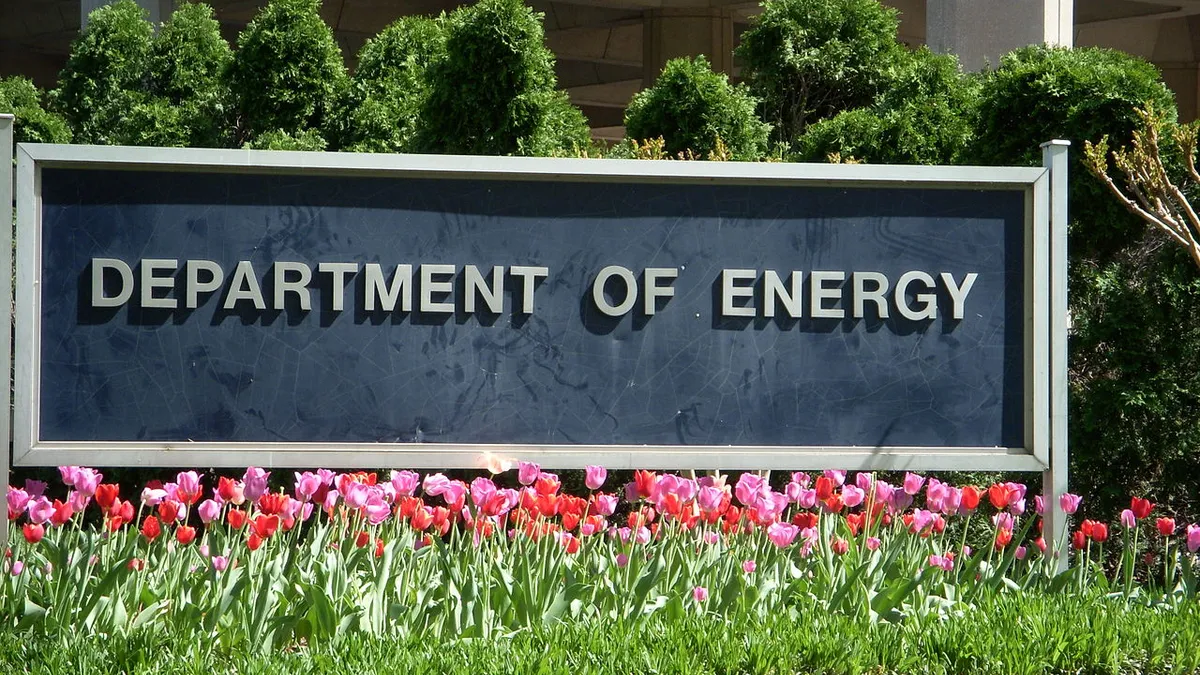Dive Brief:
- The U.S. Department of Energy on Monday proposed new energy efficiency standards for residential gas furnaces. If finalized on DOE’s proposed schedule, the new rule would go into effect in 2029 and require gas furnaces to be 95% fuel efficient.
- The proposed rule would effectively phase out older and less-efficient non-condensing style furnaces. DOE said it expects the stricter efficiency standards to save consumers $30.3 billion over 30 years.
- The rule would shift some new furnace sales to heat pumps or other electric technologies, but experts say most replacement systems would remain fueled by natural gas. Still, the American Gas Association is reviewing the rule and threatened to “vigorously object” if it will have a significant effect on the gas industry.
Dive Insight:
Older furnaces can have efficiency rates as low as 56%, according to DOE, leaving significant room for improvement. The proposed rule would be the first significant update to furnace efficiency requirements in decades, say experts.
“We’ve had far-more-efficient options available for years now,” Andrew deLaski, executive director of the Appliance Standards Awareness Project, said in a statement. “The new standard would reduce needless costs and greenhouse gas emissions.”
DOE estimated its proposed rule would save consumers $1.9 billion annually and over three decades would eliminate more than 360 million metric tons of carbon emissions.
The proposed rule will “save consumers billions on annual energy bills, reduce emissions and build on actions to support heat pump deployment,” DOE said in a statement.
Comments on the proposed rule are due 60 days after publication in the Federal Register.
Gas furnaces represent 15% of annual U.S. residential energy use, the agency estimates, and the White House is supporting efforts to electrify building energy use. Last week, President Joe Biden used the Defense Production Act to call for accelerated domestic production of heat pumps and other electric equipment.
DOE’s proposed furnace rule includes a request for comments on heat pump price declines that are expected as a result of the administration’s decarbonization policies and the Defense Production Act authorization.
According to DOE, the proposed rule could push about 7.3% of consumers to choose a heat pump when replacing an older furnace. About 1.6% would switch to an electric furnace, according to the agency’s analysis.
“Home heating bills strain the budgets of many households, especially those with low incomes, yet we’re still installing brand-new furnace models that waste a lot of the heat,” deLaski said. DOE’s proposed standard would require furnaces to use about 15% less energy than today’s least-efficient models, according to ASAP.
But less-efficient furnace models also have lower up-front costs, and the gas industry wants to keep them available to consumers.
“AGA will thoroughly examine every aspect of this proposed rule and if it is another attempt to put the natural gas industry out of business, we will vigorously object,” AGA President and CEO Karen Harbert said. “At this moment, when natural gas is imperative for our country's and the world's stability, placing enormous costs on everyday Americans is wrong-headed at best.”
AGA says some older homes, particularly in low-income areas, may not be able to accommodate more expensive venting requirements for a condensing furnace.
“It is not as simple as replacing the natural gas furnaces on the market today with natural gas furnaces that are 95% efficient,” Harbert said. “They are not the same piece of equipment and we have explained this to the Department of Energy many times.”
Electrification advocates, however, want to see heating and other applications move away from natural gas.
“We’re long overdue to update outdated furnace technology. This is the first meaningful update to furnace efficiency since 1987 when furnaces were first added to the efficiency standards program,” said Joe Vukovich, an energy efficiency advocate at the Natural Resources Defense Council.
About half of U.S. homes currently utilize fossil fuels for space heating, according to NRDC. “Americans have been forced to rely on antiquated and wasteful furnaces for long enough,” Vukovich said.















